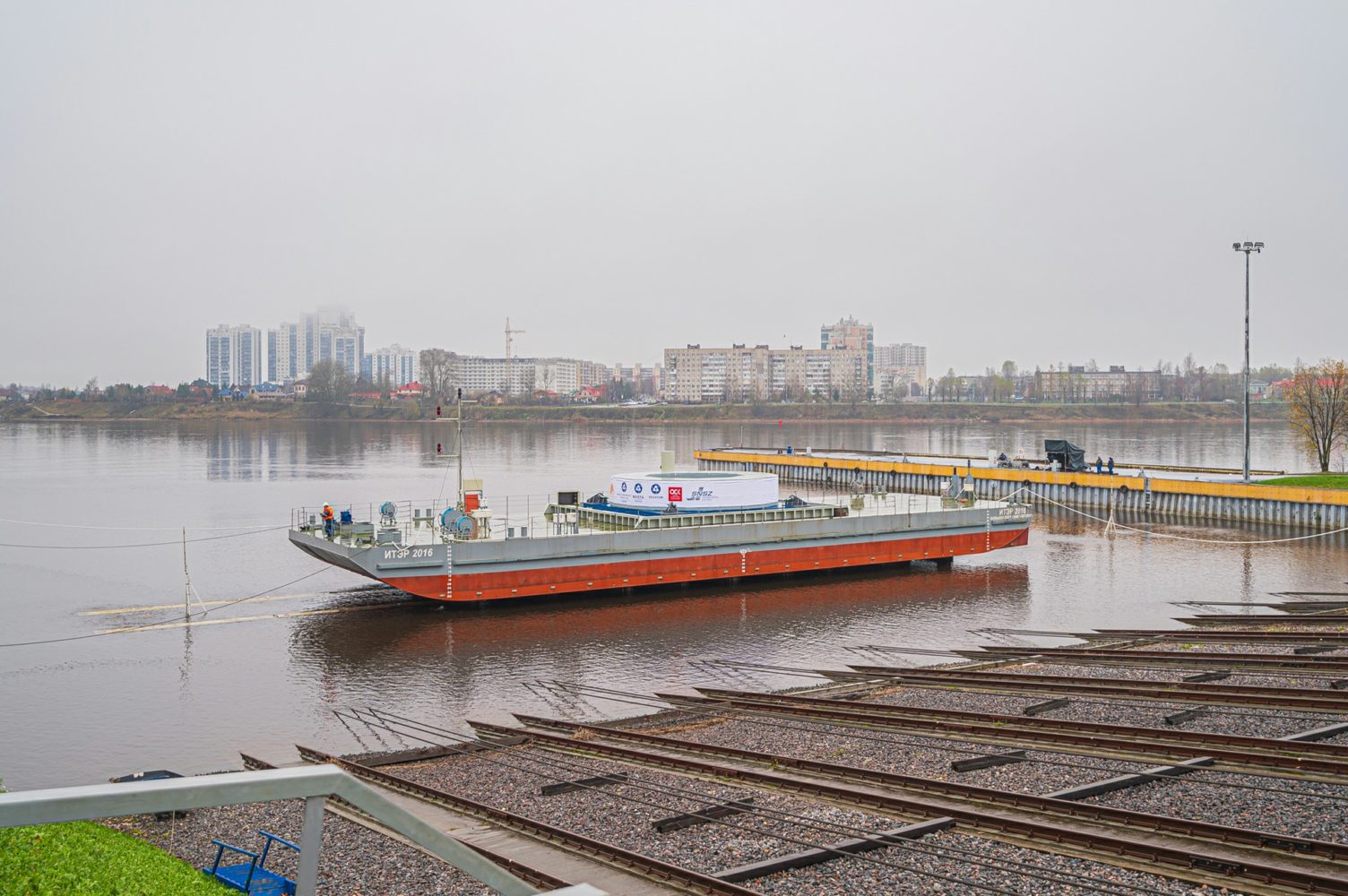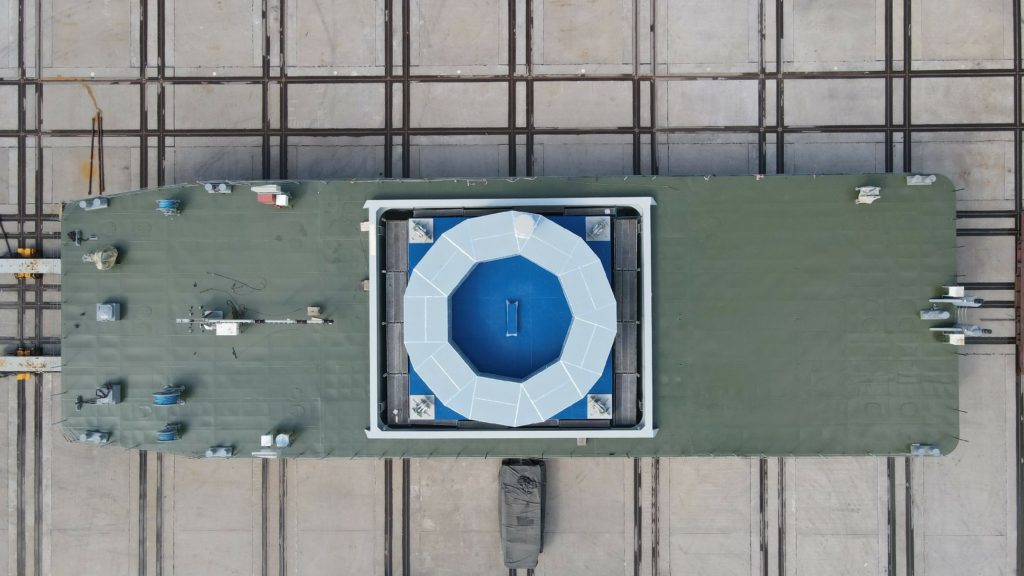
Coil Voyage to ITER
back to contentsOn November 1, a poloidal field coil PF1 was shipped from Saint Petersburg to France. It is an essential component of ITER, the world’s largest tokamak built by the international community to demonstrate the possibility of nuclear fusion generation with obtaining more energy than spending.
The destination of its sea voyage is Marseille, from which it will travel 104 km by land to the ITER site in Cadarache. “A huge road train will carry this out-of-gauge cargo at night, escorted by the police and gendarmerie. I have seen it traveling with another piece of equipment — that was spectacular! People living in nearby towns and villages poured out into the streets to take pictures of that captivating show,” Head of Russia’s ITER Center press office Alexander Petrov shares his impressions.
Why the coil is needed
The PF1 coil is a component of the ITER magnet system designed to obtain the first plasma in the fusion reactor. The magnets confine plasma whose temperature will reach 300 million degrees centigrade in certain modes of operation and keep it away from the tokamak chamber walls as no material can withstand such a high temperature. The idea of confining plasma with an electromagnetic field was first proposed by a team of Soviet scientists in the 1950s.

Russia’s contribution to ITER
22 km of superconducting strands for toroidal field coil windings
11 km of superconducting strands for poloidal field coil windings
4 test stands for equatorial and upper port plug assemblies
58 central cassette assemblies of the divertor
Thermal testing of plasma-facing components
1 poloidal field coil PF1
18 upper ducts of the vacuum vessel
8 170 GHz/1 MW gyrotrons
9 plasma measurement and diagnostic systems
179 most energy-intensive panels of the tokamak’s first wall
Engineering design of diagnostic port plugs
Power supply systems and switching equipment
Russian coil features
The PF1 poloidal field coil is a massive structure 9 meters in diameter weighing 200 tons, but it is the smallest out of six coils to be installed in ITER. Another coil, PF6, with an external diameter of 11.2 meters was manufactured and supplied by China. The four remaining coils (PF2 through PF5) are so large and heavy — their diameters range from 17 to 24 meters — that they are assembled on site. The PF1 will be installed last.
Development and production of the Russian-made poloidal field coil began in 2014.
It is composed as a stack of eight double pancakes, each wound with ‘two-in-hand’ niobium-titanium superconducting strands manufactured by Rosatom’s subsidiaries. “Here is an interesting fact: as known, the temperature inside the reactor will be ten times higher, that of the Sun while the temperature in the coils — that is, literally a couple of meters away from the reactor’s heart — will be the lowest in the Solar System, around 4K,” says Deputy Director of ITER Center Leonid Khimchenko. Tests on the superconductors were long and meticulous as engineers had to make sure that the strands meet specifications for electric current, durability, isolation, compound quality and others. Dimensional tolerances for the coil are less than 1 mm.
The first pancake was ready in 2016, and the last one in 2019. Vacuum pressure impregnation of the coil windings — one of the most critical and challenging tasks — was finished in March 2021. A year later, in March 2022, the coil passed acceptance tests. The coil, including its technology and components, was developed at Rosatom’s Efremov Research Institute of Electrophysical Equipment (NIIEFA) and manufactured at Sredne-Nevsky Plant in Saint Petersburg. “We have gone all the way from the development of detailed design documents and qualification of processes to complex engineering solutions and final tests that confirmed compliance with the requirements of the ITER Organization. I consider this event to be an indisputable achievement of the Russian academic community. It is the largest superconducting electric magnet ever made in the Russian Federation. The world does not have that many countries capable of making such products,” says Igor Rodin, Deputy Director General for Nuclear Fusion and Magnet Technology and Director of Sintez Science and Technology Center at NIIEFA.
New interpretation
Standing initially for ‘International Thermonuclear Experimental Reactor’, the acronym ITER is now associated with the Latin word ‘iter’ meaning a way, journey or road.
“This is an event of immense significance both for the Russian companies that contributed to the production of this critical component of the future fusion reactor and for the project in general. It is a breakthrough result of many years of effective teamwork between leading Russian research institutes and industrial companies, as well as a convincing demonstration of our research and technology potential,” Director of Rosatom’s ITER Center Anatoly Krasilnikov said upon the shipment of the coil. According to him, Russia extends research and deployment of high technology, including for industrial applications, despite the unprecedented sanctions imposed by the West.




